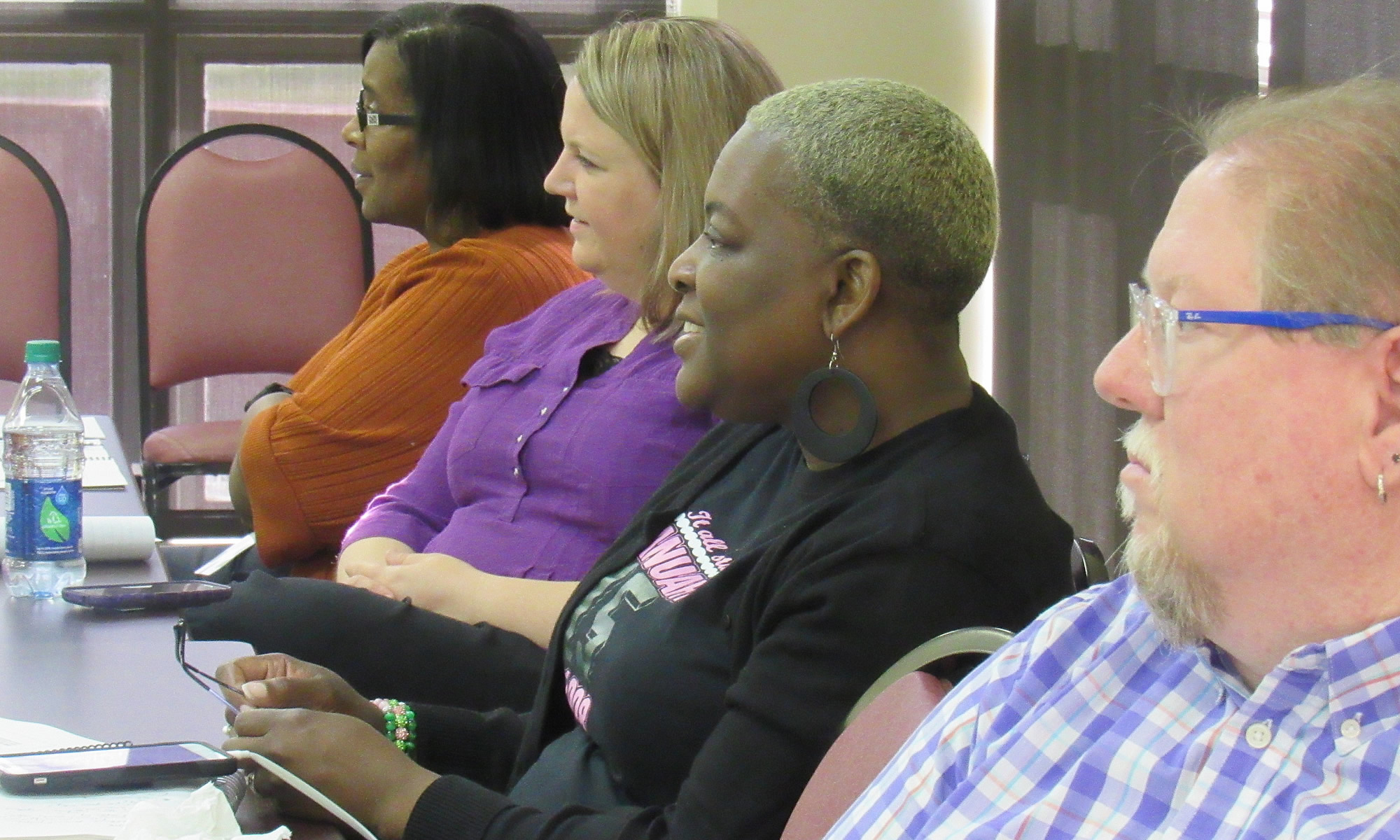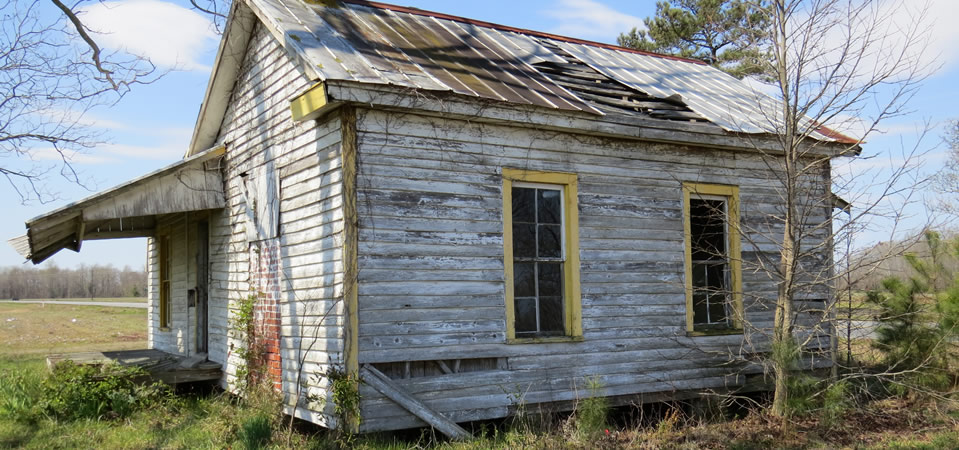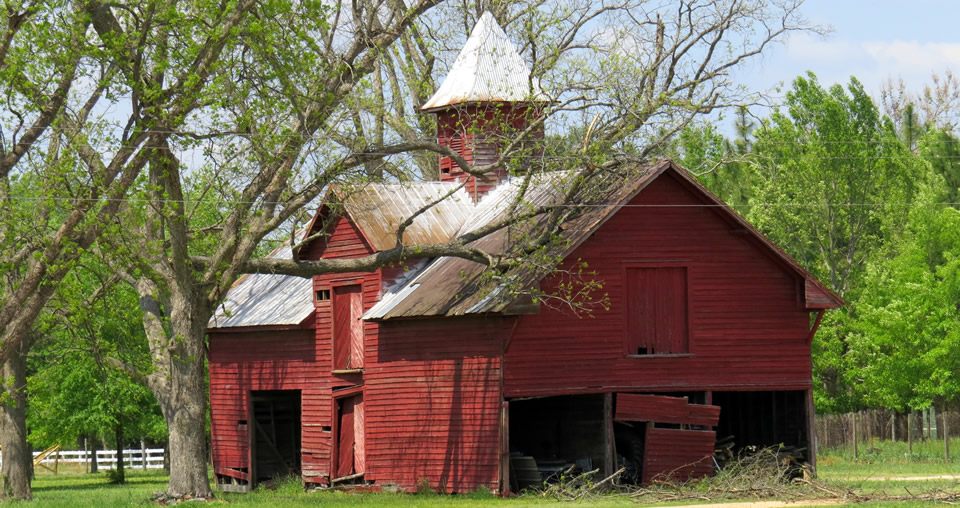
Pool hall, Fairfax, S.C.
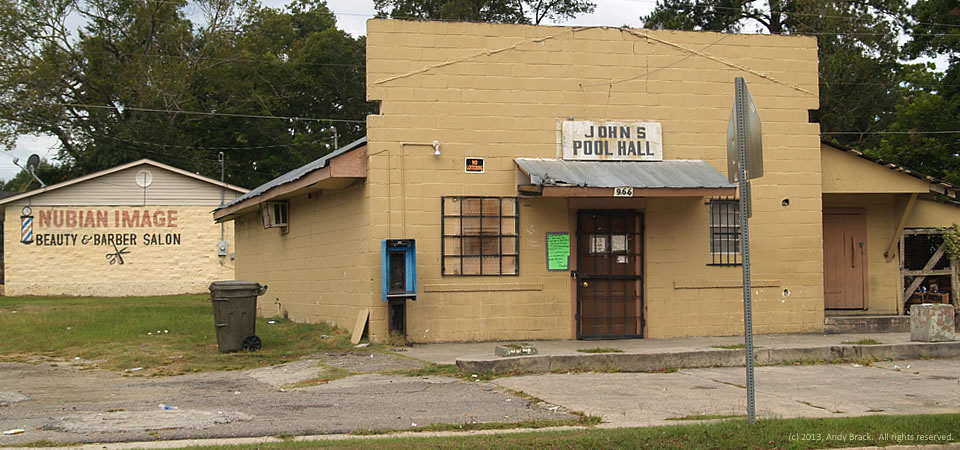
It was quiet on a recent Sunday morning outside this pool hall in Fairfax, S.C. Down the street, people filed into churches for morning services.
Fairfax, in rural Allendale County, lost about a third of its population by 2010, which it had 2,025 people compared to 3,206 people in 2000, according to Census figures in Wikipedia. Per capita income was $8,940. About 38 percent of the people in the town, which had about two times as many adult males as females, lived in poverty.
Rural Allendale County in South Carolina’s southwest corner as one of the Crescent’s highest poverty rates — more than 40 percent of people live below the federal poverty level. The median household income is about $23,000 a year — half of South Carolina’s average and well below the nation’s $50,000 average.
- More about Allendale County from QuickFacts from the U.S. Census.
- More about Fairfax, S.C. in Wikipedia.
Photo by Andy Brack, Sept. 22, 2013. All rights reserved.
Baptist church, Robertville, S.C.
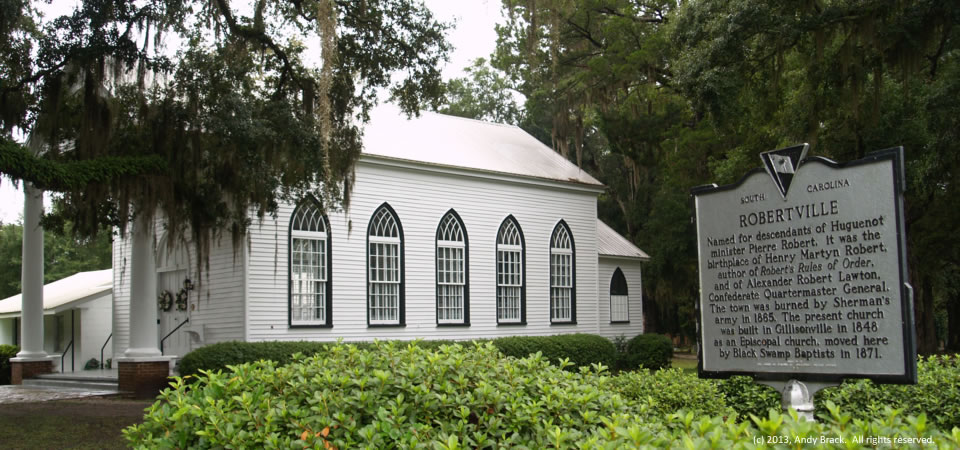
Robertville, a small unincorporated community at the southern tip of South Carolina, has a beautiful Baptist church that’s on the National Historic Register. But it’s also the birthplace of someone who is familiar to anyone who has been involved with a community or government meeting — Henry Martyn Robert, author of “Robert’s Rules of Order.”
Robert (1837-1923) was born on a South Carolina plantation which his father, a Baptist preacher, sold and freed 26 slaves in 1850 after concluding it wasn’t good for his children to be reared in a “slave-served society,” Robert’s grandson, Henry M. Robert III of Annapolis, Maryland, told Better South’s Andy Brack.
- Learn more about Robert and his rules of parliamentary procedure in this commentary by Brack.
Jasper County, population 25,833, is just over the river from Savannah, Ga. Its location near the metro area likely is why poverty in Jasper County (21.4 percent) is half that of Allendale County to the north.
Photo by Andy Brack, taken on Sept. 22, 2013. All rights reserved.
Cotton, Emanuel County, Ga.

Cotton is bustin’ out all over the South, but particularly in the fields of middle Georgia, the state that grows the most cotton in the Southern Crescent region. According to the Cotton Council International 2013 Buyers’ Guide, Georgia farmers grew more than 15 percent of the nation’s cotton in 2011-12 by producing 2.465 million bales. The only state that grew more cotton was Texas, which produced 3.5 million of the nation’s 15.573 million bales in 2011-12.
This photo was taken just north of the intersection of U.S. Highway 80 and Georgia Highway 121 in Emanuel County, which has almost 23,000 people and a poverty rate of 24.5 percent, according to the U.S. Census.
Photo taken Sept. 23, 2013, by Michael Kaynard. All rights reserved.
Abandoned house, near Enfield, N.C.
The yellow trim around windows of this abandoned, bleached farm cottage near Enfield, N.C., caught the attention of photographer Michael Kaynard as he was heading south on U.S. Highway 301 in late March, 2013.
“From what we could see through the windows, it had once been a fairly decent dwelling, although small by today’s standards. Nearby was a trailer that appeared to be the replacement home,” he observed. “When I see small houses sitting next to plowed fields, I wonder how people could raise an entire family in what is not much larger than our den. Now we have to live in homes that are 2,500 sq. ft. or larger or we feel we are in cramped quarters.”
- More photos by Kaynard are at: Kaynard Photography.
- First published May 1, 2013. All rights reserved.
New Americans, Mount Pleasant, S.C.

Some 111 people from 52 countries became U.S. citizens Tuesday during a ceremony at the Charles Pinckney National Historic Site in Mount Pleasant, S.C. Smiles abounded during the ceremony. New citizens held small American flags as they listened to speakers and waited to take the oath of allegiance.
While Mount Pleasant in Charleston County isn’t in the Southern Crescent, people in the new group of citizens lived in communities across the region. Alvaro Koo, who serves in the Air Force at Shaw Air Force Base in Sumter, said he was proud to be a U.S. citizen. “Now I’m actually part of the country I’m serving,” said the senior airman who was born in Panama.
- To read more of this citizenship ceremony, click here.
Photograph taken Sept. 17, 2013, by Andy Brack. All rights reserved.
Red barn, near Bennettsville, S.C.
Photographer Michael Kaynard of Charleston, S.C., writes that this stereotypical barn off U.S. Highway 15 south of Bennettsville, S.C., continues to shelter equipment used on an adjacent farm. “I was drawn to the design. It was quite a fancy design for a barn.” Across the rural South, more and more barns are being lost to progress.
Bennettsville is the county seat for Marlboro County, where almost 29 percent of residents live below the federal poverty line. The county had 28,145 residents in 2012, 51 percent of whom were black, according to Census estimates.
Photo by Michael Kaynard. All rights reserved. Originally posted April 25, 2013.
Decaying barn, near Pleasant Hill, N.C.
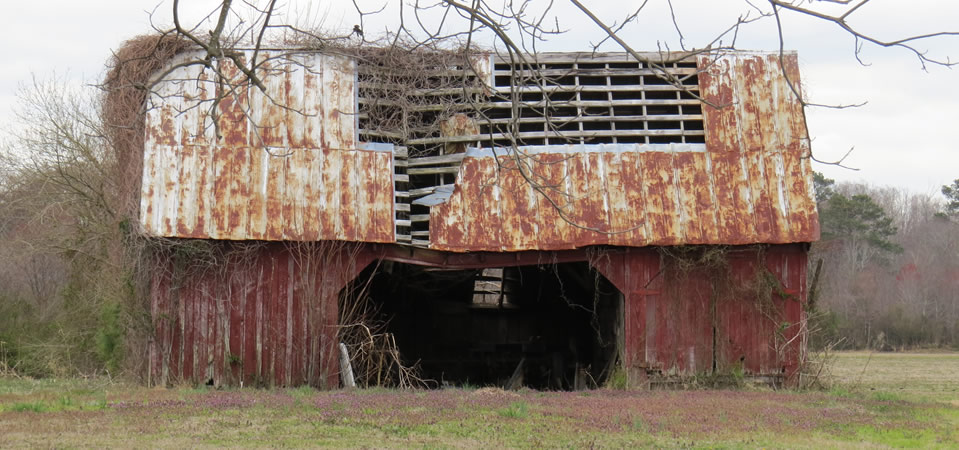
When driving north on U.S. Highway 17 in North Carolina just before crossing into Virginia, this barn stands near the town of Pleasant Hill. Nearby is an abandoned farmhouse. Both reminded photographer Michael Kaynard of the general decay of older homesteads along the highway in rural areas.
“We drove through one beaten-down town after another. We also experienced the same decaying buildings. It was a reminder that everything is not alright in America. There is a lot more poverty and struggling families than I imagined. I guess if you don’t see it then it does not exist.
“I think everyone should take the time to see a portion of their country by riding the roads. It will certainly make you appreciate where you live and what you have. I know it certainly did for me. I love riding the roads but seeing some of the things on this last trip was disturbing.”
Photo taken April 2013 by Michael Kaynard. All rights reserved. Originally posted May 3, 2013.
Grand house standing empty, Tatum, S.C.
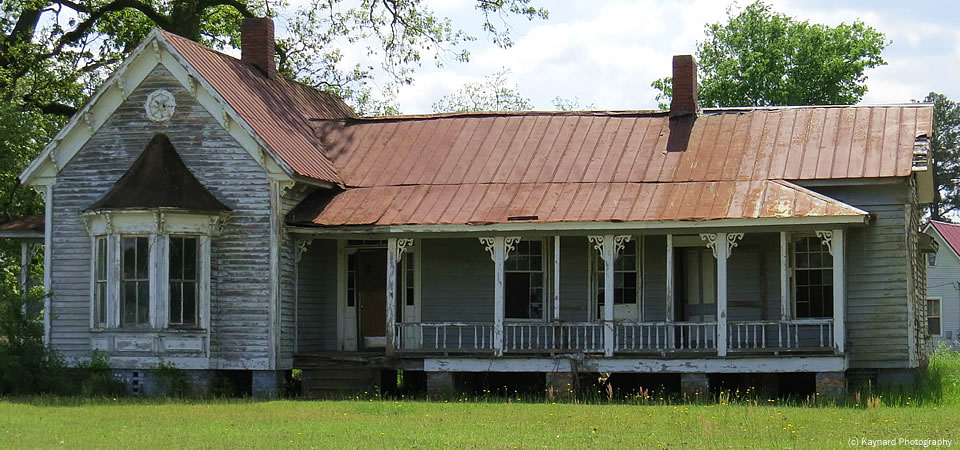
This once grand house in the Pee Dee town of South Carolina appears to stand empty, at the mercy of the elements. Photographer Michael Kaynard reports it has a lot of ornat features and probably was a nice house in its day.
“When I see houses like this, I am drawn to them because of their age and architectural features. someone was probably very proud of this structure. Now, no one seems to care what happens to it.”
— Photo taken in April 28, 2013, by Michael Kaynard. All rights reserved.
Quick Stop, closed, near Waverly, Va.
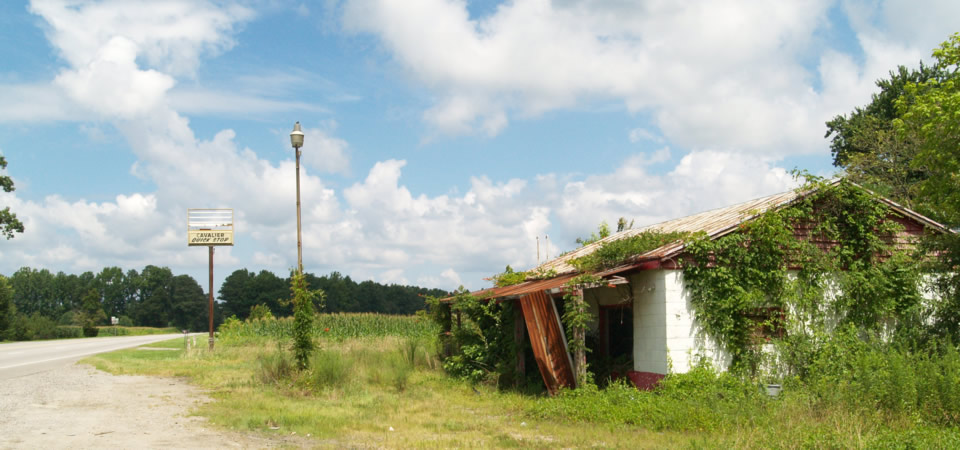
It doesn’t take long while driving the rural roads of the Southern Crescent to encounter an old country store or joint like the Cavalier Quick Stop about four miles northwest of Waverly, Va., off U.S. Highway 460.
Waverly, which had 2,149 residents in 2010 (160 fewer than 10 years earlier), is in rural Sussex County, a heartland of Virginia’s famous peanuts. Sussex County, which had more than 20 percent of people living in poverty in 2000, has some 15.6 percent of people in poverty as of the 2010 Census. About 60 percent of the county’s residents are black.
Copyrighted photo taken July 23, 2013, by Andy Brack, Center for a Better South. All rights reserved.
